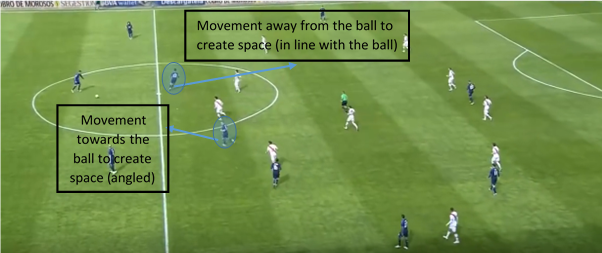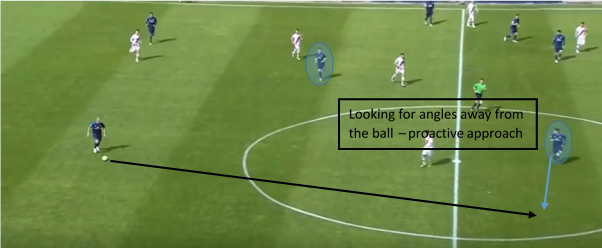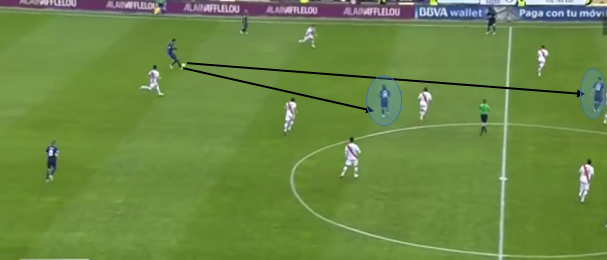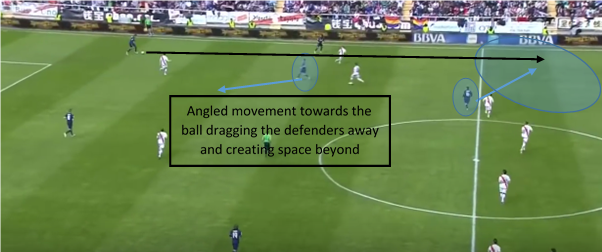By Alex Trukan
When building up from the back through the centre backs, the spaces as well as options in front of them are crucial to progress the ball forwards. The key players involved in that are central midfielders. As the centre backs are in possession, they have to make a choice on their starting positions and movements off the ball. Some of the central midfielders’ choices are to start high or deep, as well as move towards or away from the ball. This will impact the centre backs’ decisions on the ball and eventually, determine the direction and the type of build up from the back involved. The role of the midfielders in this situation will not only revolve around getting on the ball, but also creating spaces for others and directing the play in a certain way.
As the centre back gets possession, the midfielder in his ‘channel’ might choose to move away from the ball. This will allow space for the centre back to drive into as well as provide an option in front of the ball to ensure penetration. The second midfielder, would therefore, come towards the ball on the angle, to offer support. The supporting player should not operate on the same line as the player with the ball as the angled pass is more secure.

As it can be seen below, the nearest midfielder offers support on the angle whereas the second one moves away from the ball. The player away from the ball might be tempted to drop closer to the ball in order to receive it, but he should look for an opportunity to receive a pass played over a longer distance, ensuring the ball moves forwards. Moving between the opposition’s midfield and back lines as well as changing the tempo of the run would be a helpful strategy to achieve that.

Therefore, two central midfielders should always move on different lines and make sure they don’t block the passing lines to each other. Technical detail linked to that are open body position to play forward, movements to receive, receiving away from pressure as well as keeping possession if under pressure.

This type of midfielder’s movement might link to further movements of the strikers and offensive midfielders. For example, as one of the midfielders moves towards the ball to offer angled support, anther one might choose to make a forward run into space between opposition’s full back and centre back. This might trigger a more direct pass from the centre back into spaces behind the opposition back line. A good opportunity to do that might be when the ball is switched from the opposite side of the pitch.
[wpsharely id="2988"][/wpsharely]
As a coach, it's crucial to understand the outcomes achieved from different types of movements and how they link to the intended style of play. A run towards the ball in a straight line might also have its place when wanting to drag the opposition midfielder out of position or play a wall pass. This is why, being open to different solutions and experimenting with tactics is important for the development of your players.
By Alex Trukan, Development Coach, Nottingham Forest
@AlexTrukan


